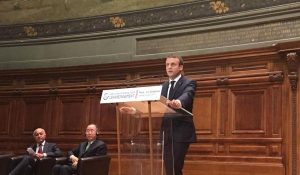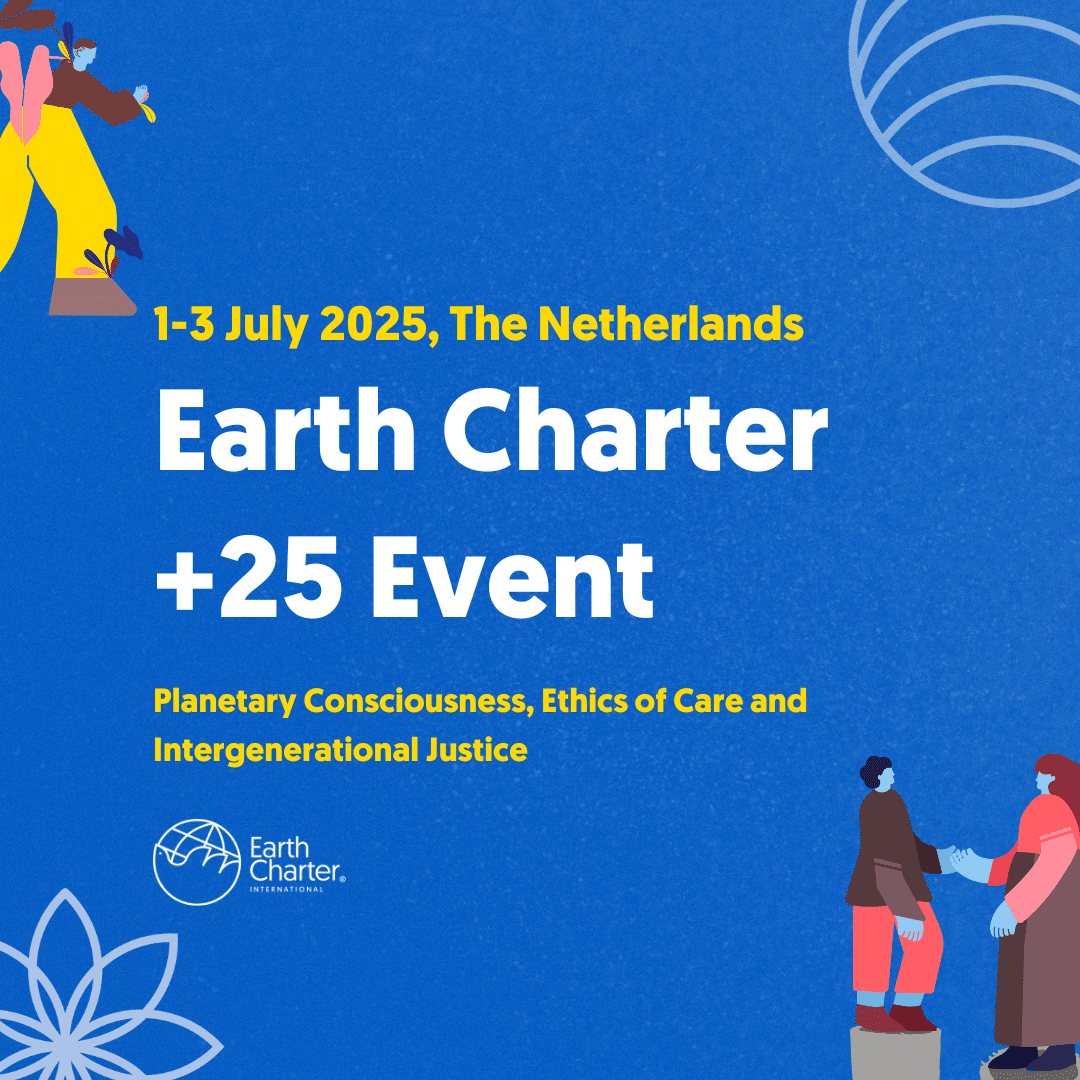 On June 23, politicians, experts and jurists met to take part in a drafting committee to finalize the “Global Pact for the Environment,” which was publically presented the following day to an audience that included Ban Ki-moon, Arnold Schwarzennegger, Laurent Fabius, Zhang Xinsheng, and many others.
On June 23, politicians, experts and jurists met to take part in a drafting committee to finalize the “Global Pact for the Environment,” which was publically presented the following day to an audience that included Ban Ki-moon, Arnold Schwarzennegger, Laurent Fabius, Zhang Xinsheng, and many others.
French President Emmanuel Macron closed the discussions, pledging to play an active role in the process and take the Pact to the UN General Assembly for consideration. It is meant to go alongside the 1966 United Nations Covenants on Economic, Social, and Cultural Rights and on Civil and Political Rights, providing a global reference instrument that could become part of the foundation of international environmental law.
This initiative is historic not only because of its environmental message, but because the Pact is intended to become a binding international treaty, unlike previous efforts such as the Rio Declaration of 1992, which had only declaratory impact.
Many of the principles in the Pact are familiar, i.e. the polluter pays principle and the precautionary principle. This is not surprising, as it builds on existing soft law documents like the Stockholm Declaration of the United Nations Conference` on the Human Environment, the World Charter for Nature, the Rio Declaration of the United Nations Conference on Environment and Development and the Earth Charter. One of the goals of the Pact is to create a unifying treaty that is specifically on environmental protection, bringing coherence to the hundreds of existing international treaties that deal with this topic. Meant to capitalize on the momentum of the 2015 Paris Agreement, the pact also would work in tandem with the 2030 Agenda for Sustainable Development and its 17 Sustainable Development Goals. If successful, the Pact would be an enforceable treaty that could solidify many fundamental principles of conservation and sustainable development.

Justice Antonio Benjamin (Brazil), Professor Nicholas Robinson (U.S.A.), Professor Christina Voight (Norway), Professor Nilufer Oral (Turkey), and Dr. Parvez Hassan (Pakistan)
This process has been enriched with the outstanding participation of Professor Nick Robinson, Judge Antonio Herman Benjamin and Dr. Parvez Hassan, who have been spearheading the evolving efforts of international environmental law and in the IUCN World Commission of Environmental Law. The three of them were also part of the drafting of the Earth Charter. Senior judges from multiple countries participated, marking the first time that judges have been part of the preparation of a treaty. Lord Robert Carnwath from the British Supreme Court, Luc Lavrysen of the Belgian Constitutional Court, and Swatanter Kumar, the Chairperson of the National Green Tribunal in India were all involved.
Although the Earth Charter is not focused solely on the environment, unlike the Global Pact for the Environment, ecological protection is still a major theme. The ecological integrity principles of the Charter can be seen in the articles of the new pact, along with the necessary inclusions for a future legal document. The Earth Charter is very specific in its ecological principles, calling for nature and biosphere reserves, endangered species recovery, the control of GMOs, the build-up of toxic substances, etc.
The Pact for the Environment faces a difficult road towards becoming an enforced treaty, and its articles are written with that consideration. It calls for necessary measures to prevent environmental harm and to ensure remediation of environmental damages, but without the specificities of the Earth Charter.
 In addition to referencing issues of environmental concern such as biodiversity and Earth’s carrying capacity, the preamble to the new pact also touches on some of the broader social considerations that are part of the Earth Charter, such as gender equality and the role of women, the importance of education, and the rights of indigenous peoples. The drafters of the Pact integrated the message of the new Sustainable Development Goals – as true positive progress involves an integrated and global approach.
In addition to referencing issues of environmental concern such as biodiversity and Earth’s carrying capacity, the preamble to the new pact also touches on some of the broader social considerations that are part of the Earth Charter, such as gender equality and the role of women, the importance of education, and the rights of indigenous peoples. The drafters of the Pact integrated the message of the new Sustainable Development Goals – as true positive progress involves an integrated and global approach.
Since the Earth Charter was written as an ethical framework and not as an international treaty, it had more latitude to include unambiguous actions for environmental change. The drafters of the Global Pact for the Environment are hoping it will become a cornerstone of international environmental law, and wrote it as such. Consequently, its ecological goals are broader and more general than many of the Earth Charter principles, and accompanied by crucial considerations for its future. Regardless of their phrasing, there is no doubt that if the Global Pact can keep its core goals through the process towards implementation, many of the Earth Charter principles will be much closer to being fulfilled and it will become a milestone in the global environment governance efforts.
(Article by: Lorna Battista)
Continue Reading on the Global Pact for the Environment:
http://legal-planet.org/2017/06/27/france-pushes-for-global-pact-on-the-environment/
http://www.reuters.com/article/us-world-climatechange-macron-idUSKBN19F0LG







